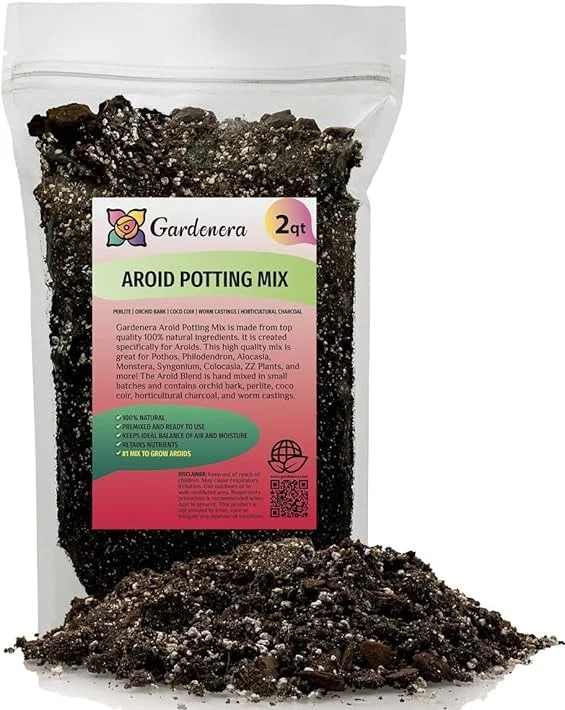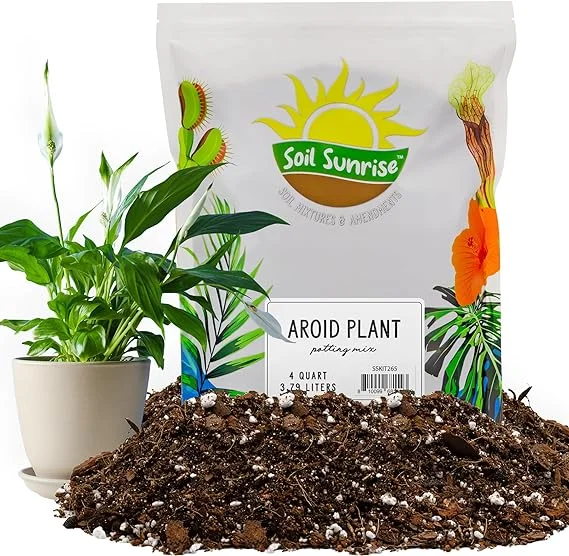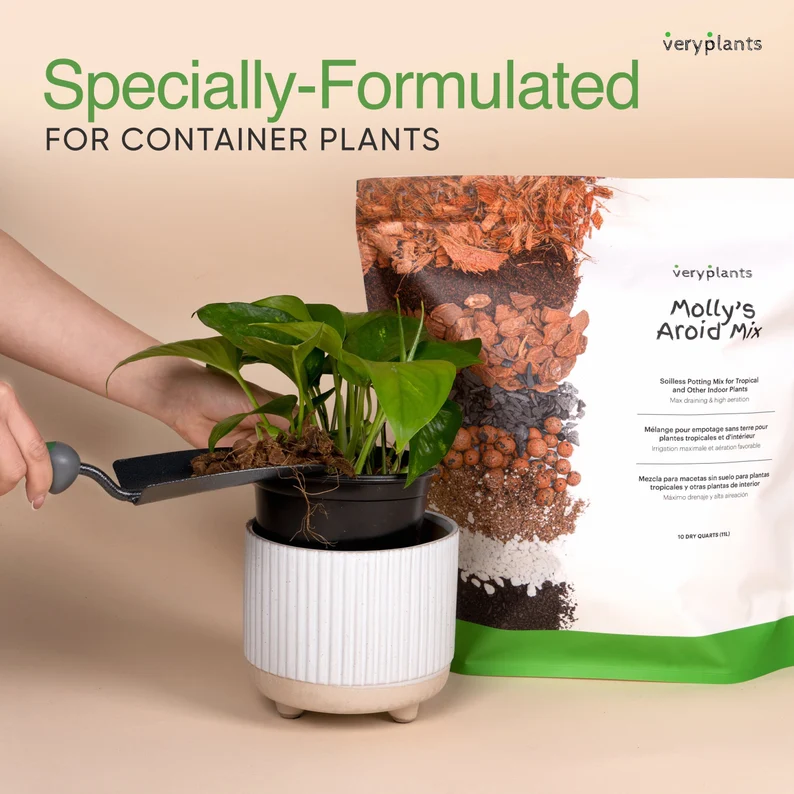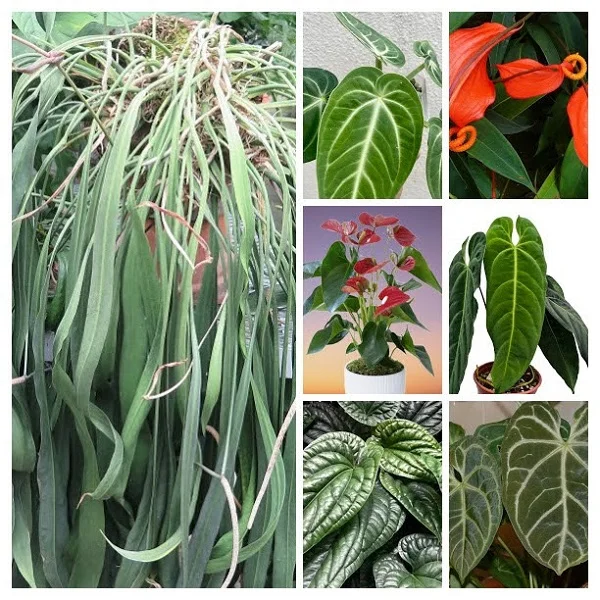Anthurium warocqueanum (Queen Anthurium) Indoor Care and Propagation Guide
Some links in this post may be affiliate links
Anthurium warocqueanum (Queen Anthurium) blossoms in bright indirect light, average warmth, high humidity and moist, fertile, well-drained, aroids potting soil coupled with monthly feeding in the growing period.
Anthurium warocqueanum is among the rare Anthurium varieties which bears light-green to very dark greenish-black, velvety leaves as it bears short hairs on the leaves giving it a velvety texture.
Queen Anthurium is a highly sought-after plant, named for the Belgian industrialist and horticulturalist Arthur Warocqué (1835-1880). It was first collected from Colombia in 1874 by Gustav Wallis during his working period for Veitch Nurseries, United Kingdom.
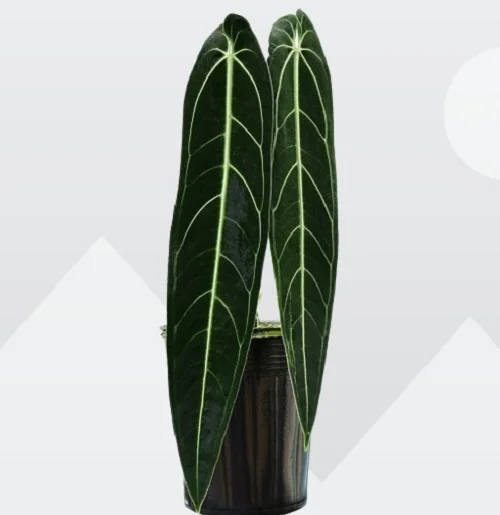
Botanical name: Anthurium warocqueanum
Family: Araceae
Common name: Queen Anthurium
Origin
Anthurium warocqueanum is native to Colombia, South America where is found growing in wet lowlands and mountain valleys as an epiphyte on trees.
Size
Queen Anthurium can grow to a height of 3-4 feet and a width of 3-4 feet. The spectacular, oblong leaves mature at 3-4 feet long by about 1 foot wide which places this plant among the large-leafed plants ideal for a bold statement in any space.
Toxicity
Queen Anthurium is toxic to both humans and pets like other Anthuriums. Anthuriums are said to contain oxalate crystals which can cause digestive distress, breathing problems and skin irritation. Keep it away from children and pets. Always wear gloves when handling this plant and wash your hands thereafter.
Where to Buy
Are you looking to add Anthurium warocqueanum to your collection? Beautiful plants are available online on Etsy (Link to Etsy).
Anthurium warocqueanum Care Indoors
Anthurium warocqueanum (Queen Anthurium) blossoms in bright indirect light, average warmth of 18-280C, humidity of 60-80% and moist, fertile, well-drained, aroids potting soil coupled with monthly feeding during the growing period.
Queen Anthurium requires removal of yellow leaves to keep it tidy as well as minimize pest and disease infestations. Repotting is only needed when it is pot-bound. Keep reading for a detailed account on the best growing conditions.
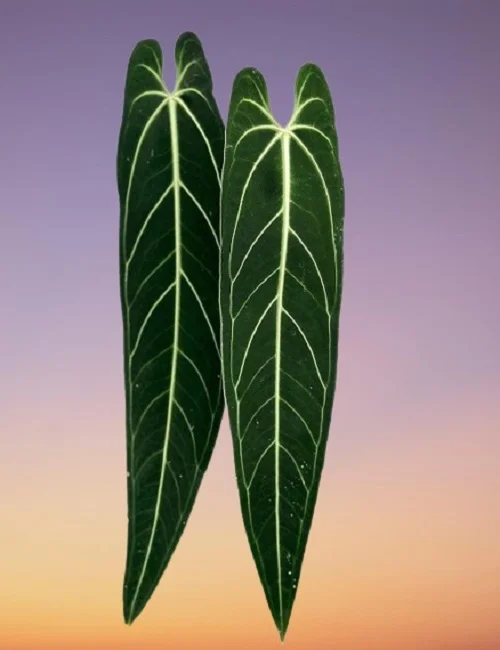
Light Requirements
Anthurium warocqueanum grows best in bright indirect light (semi-shade). Keep it away from direct sunshine as it can scorch the leaves.
If the natural lighting is not enough, consider instaling a grow light to supplement it to boost growth. Check out these full spectrum grow lights available on Amazon.
Rotate the pot regularly to ensure that the plant receives light on all sides for uniform growth to avoid lop-sided growth.
Watering
Water Queen Anthurium thoroughly during the growing season when the top 1-2 inches of soil feels dry to the touch and keep soil consistently moist.
Reduce watering in the cold season as growth is minimal and maintain the soil slightly moist but do not let the soil dry out completely.
Use luke warm, chlorine-free water as the plant is sensitive to chlorine and other chemicals dissolved in water. Avoid wetting the foliage as it can lead to fungal diseases.
Ensure that the pot has a drainage hole and empty the saucer to prevent the soil from getting soggy as it can result in root-rot and loss of the plant.
Temperature and Humidity
Queen Anthurium does well in average warmth of 18-280C. Keep it away from cold drafts to prevent sudden changes in temperature.
Anthurium warocqueanum thrives in high humidity of 60-80%. To elevate humidity, set the pot on a wet pebble tray or use a humidifier. You may also grow the plant in a closed terrarium.
Gently damp wipe the leaves with a soft cloth to get rid of dust. Dry any water droplets on the leaves and ensure that there is good air circulation to prevent fungal infestations.
Potting Mix
The best potting mix for Queen Anthurium should be rich in organic matter and well-drained to prevent it from getting soggy while providing the required nutrients. Most potting mixes designed for aroids are ideal for this plant.
Fertilizer
Feed Anthurium warocqueanum every 4-6 weeks during the growing period with a balanced, water-soluble fertilizer. Do not feed in the cold season as growth is minimal at this time and feeding at this time can lead to fertilizer burn.
Regularly, flush out accumulated salts from the soil by running a stream of water through the soil until the water comes out through the drainage hole. Allow it to run for a few minutes and repeat the process several times.
Repotting
Repot Anthurium warocqueanum every 2-3 years at the beginning of the growing season when pot-bound. Use a pot one size larger and well-drained soil that is rich in organic matter.
Confirm that the pot has drainage holes to avoid getting soggy soil as it can lead to root-rot and eventual death of the plant. On accout of its pendulous leaves, Queen Anthurium is perfect in a hanging basket. Check out these marcrame hanger and self watering pot set on Amazon.
Pruning
Pruning Anthurium warocqueanum involves removal yellow and dead leaves to maintain the plant neat as well as reduce pest and disease infestations.
Cut the yellow leaves at the base of the stem with a sharp sterlized knife or a clean pair of scissors to avoid unnecessary injuries which can lead to disease infestations. Cut away any wayward leaves to maintain the shape of the plant.
Propagation
Anthurium warocqueanum (Queen Anthurium) can be propagated during the growing season from splits by plant division. Below is an outline on propagation by plant division.
How to propagate Queen Anthurium by plant division
Water the Queen Anthurium thoroughly at least 1 day before to make it easier to divide and also hasten establishment. A well hydrated plant suffers less shock and takes a shorter time to take root.
Carefully, slip the plant out of its pot and carefully divide it into sections by pulling apart the roots. Ensure each split has adequate roots to hasten establishment.
Select a 6 or 8 inches pot and ensure that the pot has a drainage hole to prevent the soil from getting soggy as it can lead to rotting.
Fill the pot with loose, free-draining, potting mix and make a hole in the center of the pot. Ensure that the hole is slightly wider than the root base of the split.
Place the split in the previously made hole and lightly firm the soil around the base while taking care not to bury it too deep; maintain the split at the same soil level it was in the previous pot.
Water the soil thoroughly and place the set up in a well-lit, warm place until the new Anthurium warocqueanum is well established after which you can begin routine care.
Related: How to Propagate Anthurium Plants by 5 Easy Methods
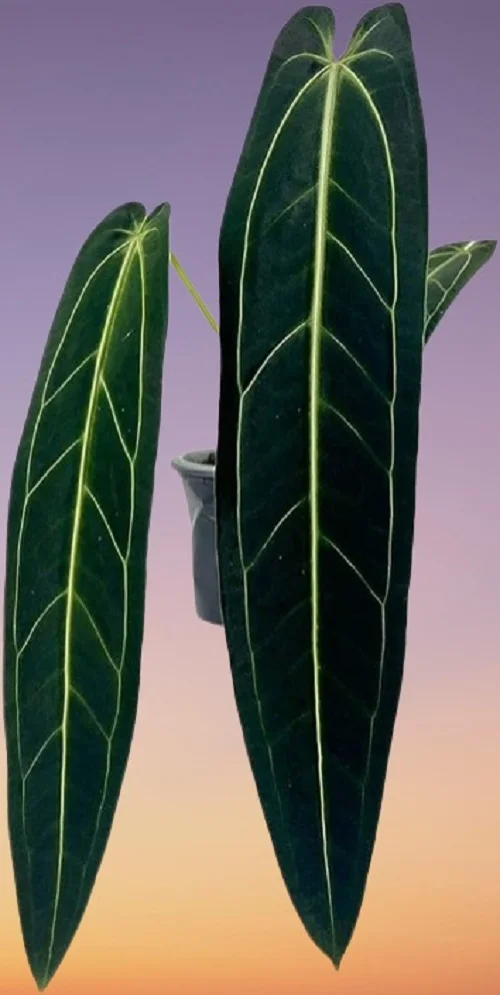
Anthurium warocqueanum Growing Problems
Anthurium warocqueanum (Queen Anthurium) problems include brown leaf tips, drooping leaves, yellow leaves, brown leaf spots, pests and diseases among others. Keep reading for more on these problems and how to fix them.
Pests
The common pests in Anthurium warocqueanum are Spider Mites, Scale Insects and Mealybugs. Isolate the affected plant to prevent spread to other plants and treat it with neem oil or insecticidal soap as per the manufacturer's instructions.
Diseases
Queen Anthurium is prone to root-rot disease which is more prevalent in soggy soil brought about by poor soil drainage. To keep root-rot away, maintain the soil moist but not soggy by ensuring that the pot has a drainage hole and that the soil is well-drained.
Brown leaf tips
Two possible reasons are responsible for brown leaf tips in Anthurium warocqueanum. One main reason for brown leaf tips is too dry air. Set the pot on a wet pebble tray or use a cool mist humidifier to raise humidity.
The second possible reason for brown leaf tips in Queen Anthurium is soggy soil. Keep the soil moist but not soggy by ensuring that the pot has a drainage hole and the soil is well-drained that it drains easily.
Drooping leaves
There are four possible causes of drooping leaves in Anthurium warocqueanum. One possible cause of drooping leaves is low humidity. To increase humidity, set the pot on a wet pebble tray.
The second possible cause of drooping leaves in Queen Anthurium is incorrect watering; either underwatering or overwatering. Maintain the soil moist at all times during the growing season and never allow the soil ball to dry out completely or to be soggy.
The third possible cause of drooping leaves in Anthurium warocqueanum is too high temperature due to exposure to direct sunlight. Keep the plant away from direct sunlight by filtering the light with a sheer curtain.
The fourth possible cause of drooping leaves in Queen Anthurium is pests and diseases infestation. Regularly inspect your plant and take timely control measures for these pests.
Yellow leaves
One of the possible causes of yellow leaves in Anthurium warocqueanum is soggy soil. Keep the soil moist but not soggy. Ensure that the pot has a drainage hole and the soil is free-draining to prevent the soil from getting soggy.
The second cause of yellow leaves in Queen Anthurium is cold drafts (cold air). Protect the plant from cold draughts or place it away from windy doors and windows.
Brown leaf spots
The brown leaf spots are sun scorch marks caused by exposure of the Queen Anthurium to direct sunlight. Move the plant to a shaded place or use a curtain to filter the sunlight.
You liked it? Share on social media.
Related Content
Amazon Associates Disclosure
Homeplantsguide.com is a participant in the Amazon Services LLC Associates Program, an affiliate advertising program designed to provide a means for sites to earn advertising fees by advertising and linking to amazon.com.
